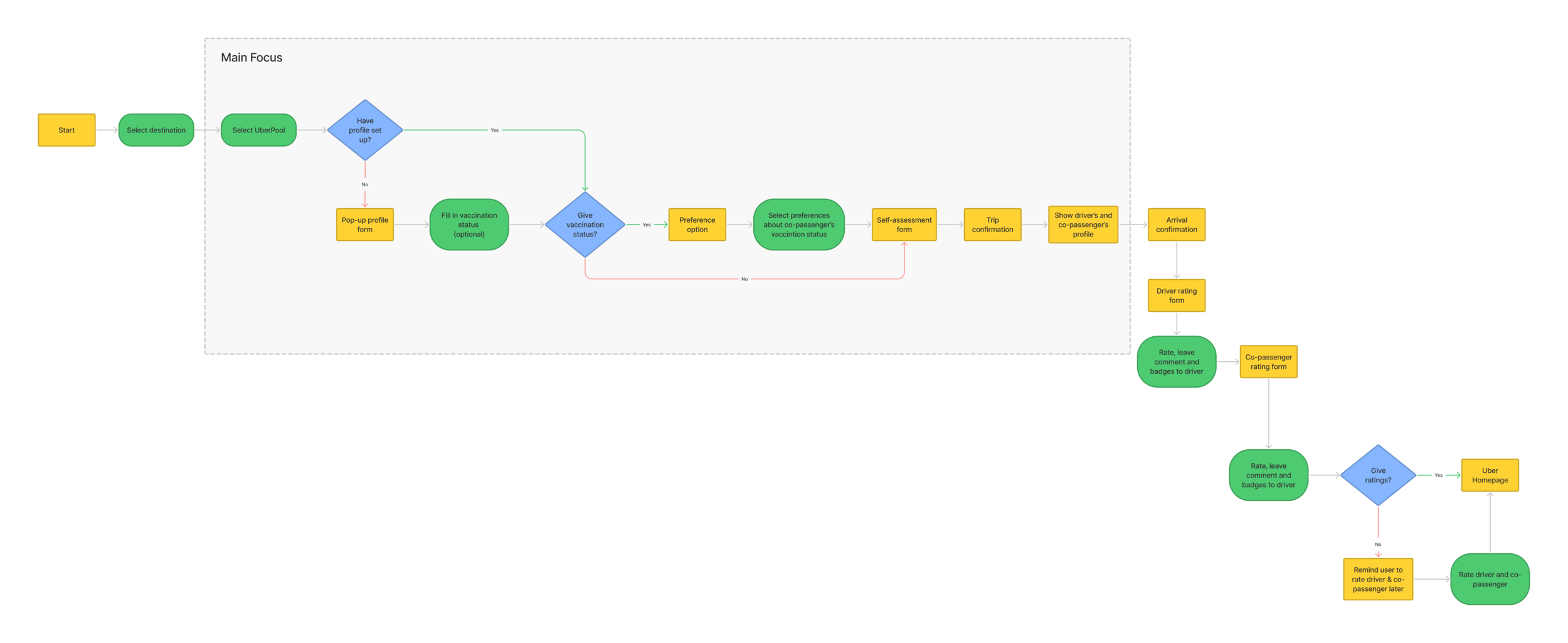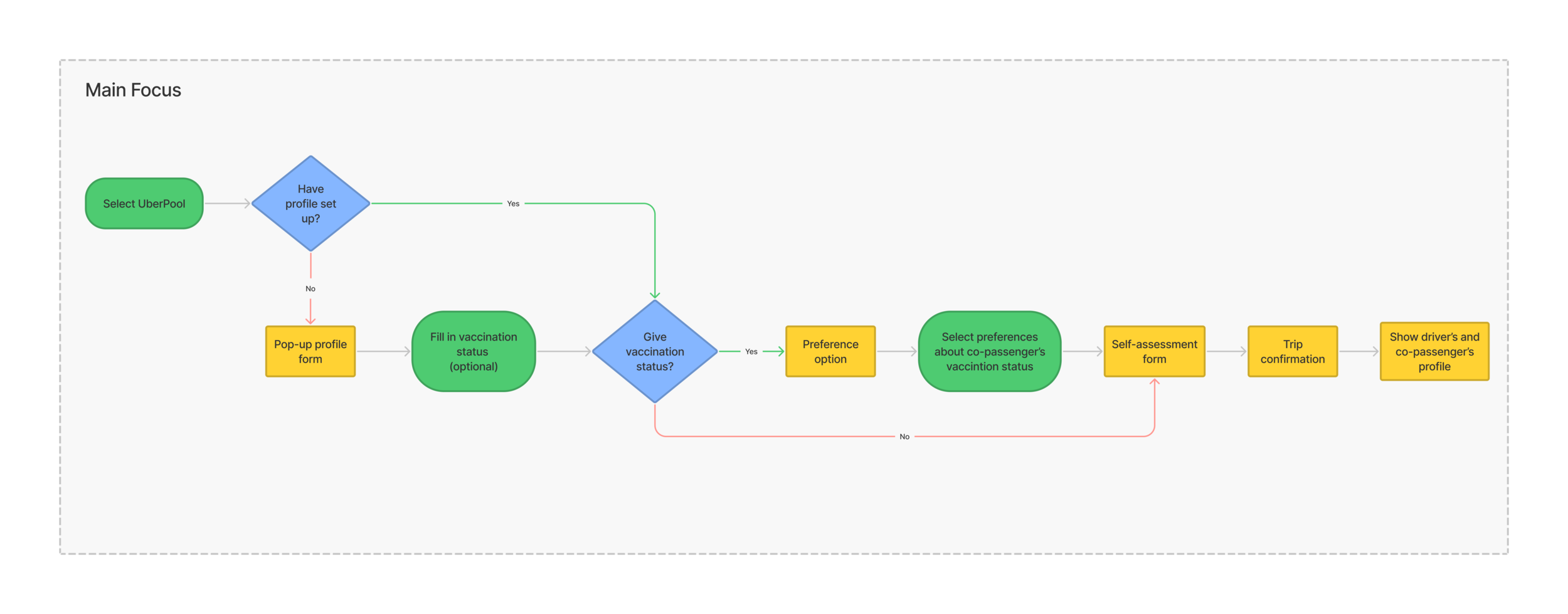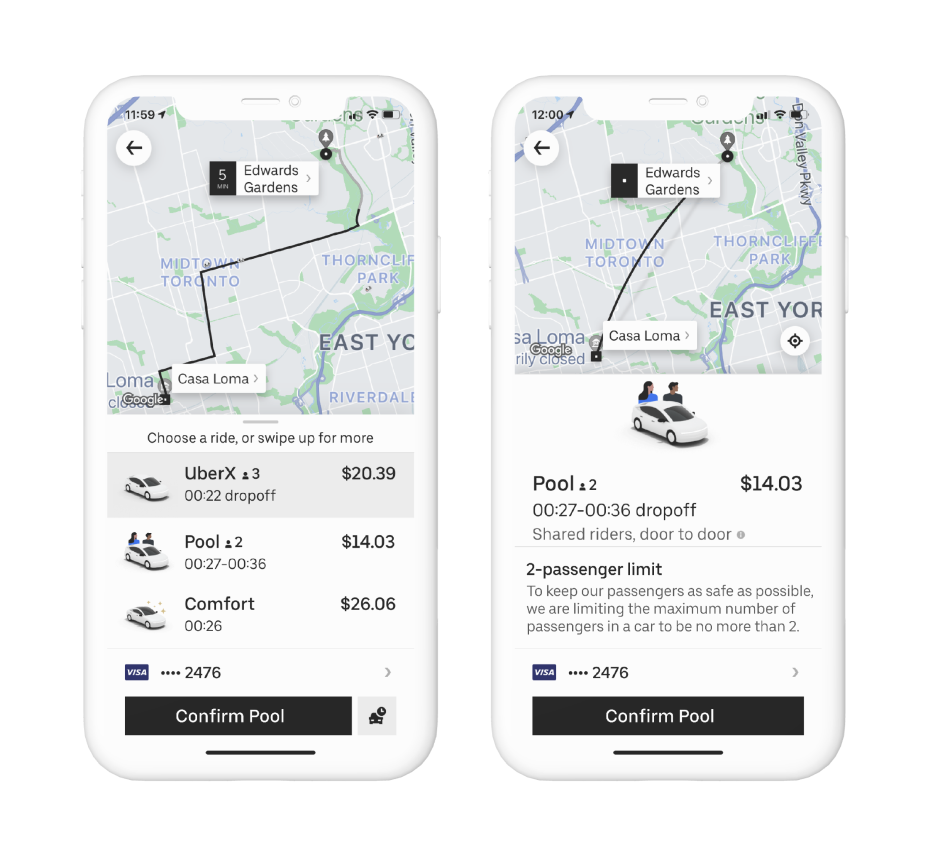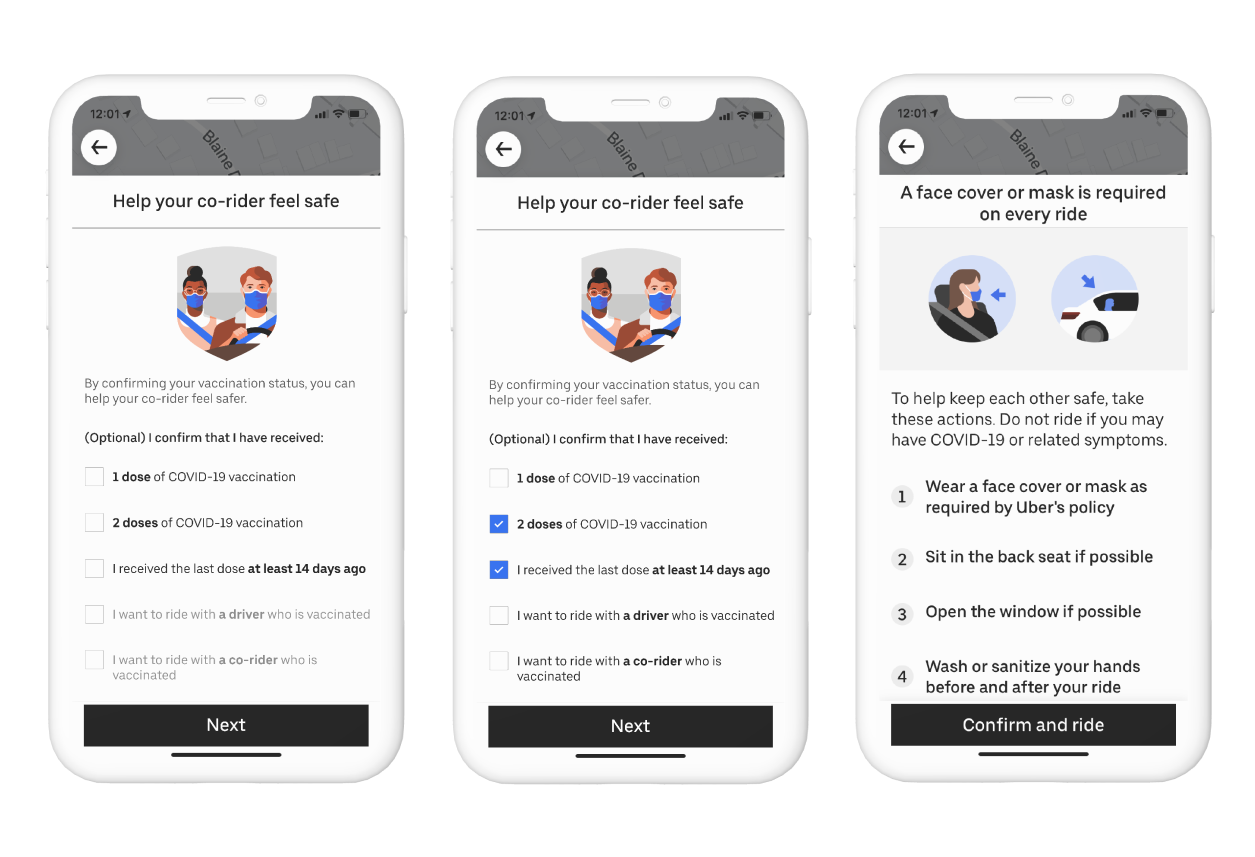
Disclaimer
This case study was created with the information on Uber and COVID-19 safety regulations enforced around May/June 2021. Also this design challenge was a combination of Marketing, UX Design and Project Management. I will be focusing on the UX side for this case study, but here is the full final presentation.
About the Project
Uber introduced UberPool as a way to get more people into less cars by matching riders based on their location and destination, becoming one of the most affordable services on the app. However, with the rise of COVID-19 cases, sharing a ride with multiple people was no longer safe, so the service was pulled from the platform. As of now, UberPool has yet to make a comeback.
Our team started to develop a solution on how to reintroduce the UberPool service back to the Uber app while also keeping the safety of riders top priority.
My Role
UX Designer and Researcher
Team
1 Project Manager, 1 Marketer, 2 UX Designers
Timeline
2 weeks (May 17 - June 2)
Tools
Google Meet, Figma and Miro
Problem Statment
How can we make passengers feel more comfortable about using UberPool and riding with strangers during the pandemic?
Solution
Building upon Uber’s existing COVID Safety Checklist by adding vaccination profiles that are accessible for both drivers and co-passengers who choose to use UberPool. Riders will be given the option whether to input their vaccination status and will be matched with other UberPool passengers based on shared preference/information that has been inputted.
Understanding Uber
Uber themselves were already doing a lot during the pandemic. For most countries they have launched the Mask Verification feature. Drivers have to take a selfie wearing a mask in order to use the app for the day (which also notifies riders). And, riders must confirm on the app that they have no symptoms and are wearing a mask before every ride. Sanitized vehicles and hands and open windows for ventilation are required. Also riders must sit in the back and the max number of passengers has been reused to 3 in UberX.
Because Uber operates globally, we decided to focus on the US & Canada market for this challenge.
COVID Self Checklist and Mask Verification: Uber Newsroom
Learning from the Competition
I conducted an analysis on other ride-sharing services (Lyft, Toronto Transit Commission, Poparide and BlaBlaCar) to see how they were operating during the pandemic compared to Uber. Overall, all of them were following the standard COVID prevention rules (ie. mandatory face masks, sanitizing hands and vehicle, social distancing and self-checking for any symptoms).
However, while researching I found something interesting about one of the competitors: BlaBlaCar.
A carpool service based in Paris, France and operates in Europe and Latin America. Users are matched with drivers going the same direction. Usually for long distances between major cities and drivers can choose who gets to ride with them.
They have a unique rating system, passengers/drivers can input their “BlaBla” or how chatty they are (“bla” quiet, “blabla” chatty and “blabla” can’t keep quiet). Both drivers/co-passengers can rate each other to get points to “level up.”
Spoilers: The “BlaBla” feature ended up inspiring our solution!
User Research
Our team surveyed 59 people and interviewed 5, targeting those who have used UberPool before and those who haven’t. We gave both groups the same question:
Would they consider using UberPool if it was relaunched on the app?
User Survey Results
54% of them say that they would consider using UberPool when it relaunches.
Two biggest age ranges of users where 18-24 (63%) and 25 - 34 (36%)
Biggest fears/concerns from users were:
Possibility of getting COVID from co-passenger
Sharing a ride with a stranger (was also a concern pre-pandemic)
The underlying problem is that riders don’t feel comfortable about not knowing who they are going to share a ride with. Riders would like a clear understanding on who they are riding with.
Personas
Using the data gathered by our research, we made two user personas. Dorian, a past UberPool user that would use the service again and Emma, non-UberPool user but is open to the idea.
Finalizing the Solution
With all of our findings, we decided to expand the existing COVID Self Checklist to include Driver/Passenger Vaccination Profiles. When riders select UberPool, they are given the option to confirm whether they got their vaccine and their preference in choosing to ride with a co-passenger and driver that are also vaccinated.
Information included will be:
Last UberPool trip
Rating from the driver (as there is already a passenger rating system)
Self-check
Vaccination record
Gender
Rating from other passengers
Userflow
We created a user flow of the entire process of an UberPool trip, starting with the user opening their app to use the service to the end where the user has reached their destination and can give their rating to their driver and co-passenger.
High Fidelity Mockups
We jumped straight into creating high fidelity mockups of our solution - illustrating the user’s journey from selecting the Pool service, adding their preferences to rating their driver and co-passenger after arriving at their destination.
Reflection
Our project was well-received from the UX coaches and our peers and I am so proud of our team (full presentation is HERE).
For lessons learned, I learned to not get too attached to one solution as it might not be the best and that there is always room to test and revise a design. Also, I wished that I had low fidelity wireframes of our solution because we jumped straight into high fidelity mockups. I would have liked to show more of the rough process that our team did.
If we had more time, we would like to test out our prototype with existing Uber riders to see how they respond to the new feature and how we could enhance it. Especially with it being optional to input your vaccination status rather than mandatory, how would users feel about that aspect? Would it impact the amount of people willing to use UberPool? Would there be enough “data'' for the algorithm to match fellow passengers? It would be great to explore these questions.








